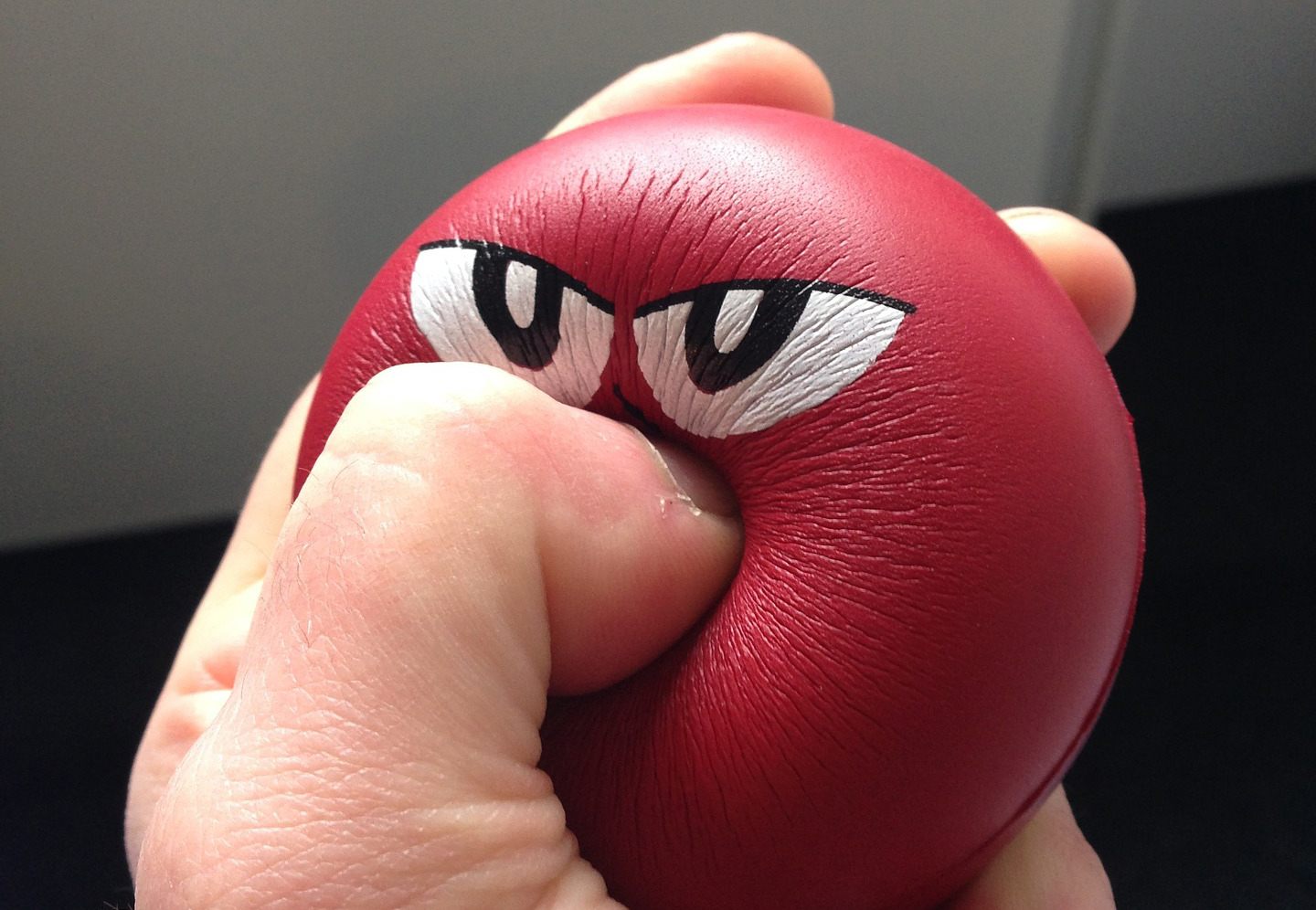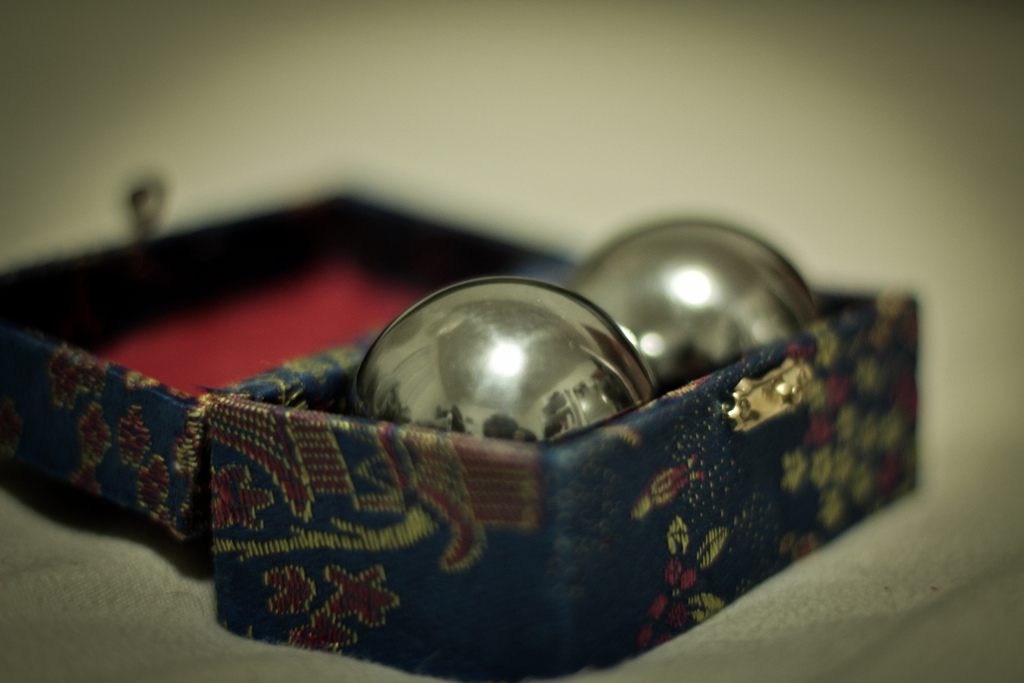Quit Worrying, Fidget Toys Have Been Around Forever
A spin through anxiety gadgets, from worry beads to Baoding balls.

The first time you saw the strange metallic three-pronged gadget, it was likely spinning nonchalantly between the fingers of a coworker or a random guy on the subway or your 10-year-old niece. The early adopter may have informed you that fidget spinners, in addition to their shiny and spinny appeal, reduce stress and help you focus. That reputation has caused spinners to sell out at drugstores, toy stores, and 7-Elevens across the country and top Amazon’s toy bestsellers list for weeks.
It’s no surprise that fidget spinners have captured widespread attention. People have long been attracted to toys that claim to take your worries away or increase concentration. Fidget spinners are only the latest in a long tradition of toys that gamify worry.
Stress has existed as long as we have been a thinking people. Anxiety about keeping up with emails and the social ramifications of posting on Facebook may be modern but the feeling itself is a tale as old as time. And cultures around the world have come up with toys as a way to cope with worry.

“Designers are currently excited about creating novel fidget objects, but they’ve been around through the ages in one form or another,” says Dr. Katherine Isbister, a professor of computational media at the University of California, Santa Cruz. She worked with Dr. Michael Karlesky on research about how and why we fidget, including findings in 2016 titled “Understanding Fidget Widgets: Exploring the Design Space of Embodied Self-Regulation.”
Fidget spinners, to Dr. Karlesky, are reflective of a human need to self-soothe. “We are hard-wired for self-regulation enacted through tangible, tactile sensory experiences,” he says. “These mind-body mechanisms are initiated with specific objects with at least two key qualities: a distinct tactile experience and an ease in repeating that stimulation.”
Centuries before fidgets spinners came on the market, Baoding balls were created in Ming dynasty China (1368–1644) to perform a similar function. The two metal balls, small enough to fit in one hand, could be rotated repeatedly to reduce stress. The constant motion of the smooth balls was thought to be soothing and put the user in a more meditative mindset.

Baoding balls were the inspiration for contemporary ubiquitous stress balls. The squeezable palm-sized ball, designed to relieve tension and stress without leaving your desk, is now best known as a cheap corporate giveaway. The reason this toy persists as an office mainstay is the belief that our stress can be contained and then released if we squeeze that ball hard enough.
More similar to fidget spinners are Greek kompoloi (worry beads), a string of smooth beads that can be rolled and moved along the length of the cord. Worry beads have been historically associated with the monks of Mount Athos, who used them to count their prayers around 800 years ago.
As with the fidget spinner, there is a certain level of skill that can be applied to manipulating the beads. A more practiced user could handle the beads quicker and with more finesse. Unlike look-alike Catholic Rosary beads, misbahas used by Muslims, or Hindu prayer beads, contemporary kompoloi serve no greater function than to be used as a fidget object.

There have not been controlled studies to conclusively link fidgeting with less anxiety and increased concentration. “Everyday people reporting on their own that a fidget helps them to focus is different than using one to help someone with managing anxiety or ADHD,” says Dr. Isbister.
Until more research is done on the controlled effects of fidgeting, the enticing “anti-anxiety” marketing slogan for fidget spinners should not be believed. However self-soothing with tactile objects is a practice that goes back long before experts were debating the veracity of fidget spinner claims on CNN.
We may need fidget widgets now more than ever. “As we have moved more towards keyboards and touch screens as our dominant experience of our tools, this has caused us to literally reach out for more and varied tactile experiences including objects like fidget spinners,” says Dr. Karlesky.
It’s no wonder then that fidget spinners have exploded into the toy market this spring. Eventually people will tire of this fad. But then someone will reinvent the worry toy again—history has shown us that much.

















Follow us on Twitter to get the latest on the world's hidden wonders.
Like us on Facebook to get the latest on the world's hidden wonders.
Follow us on Twitter Like us on Facebook